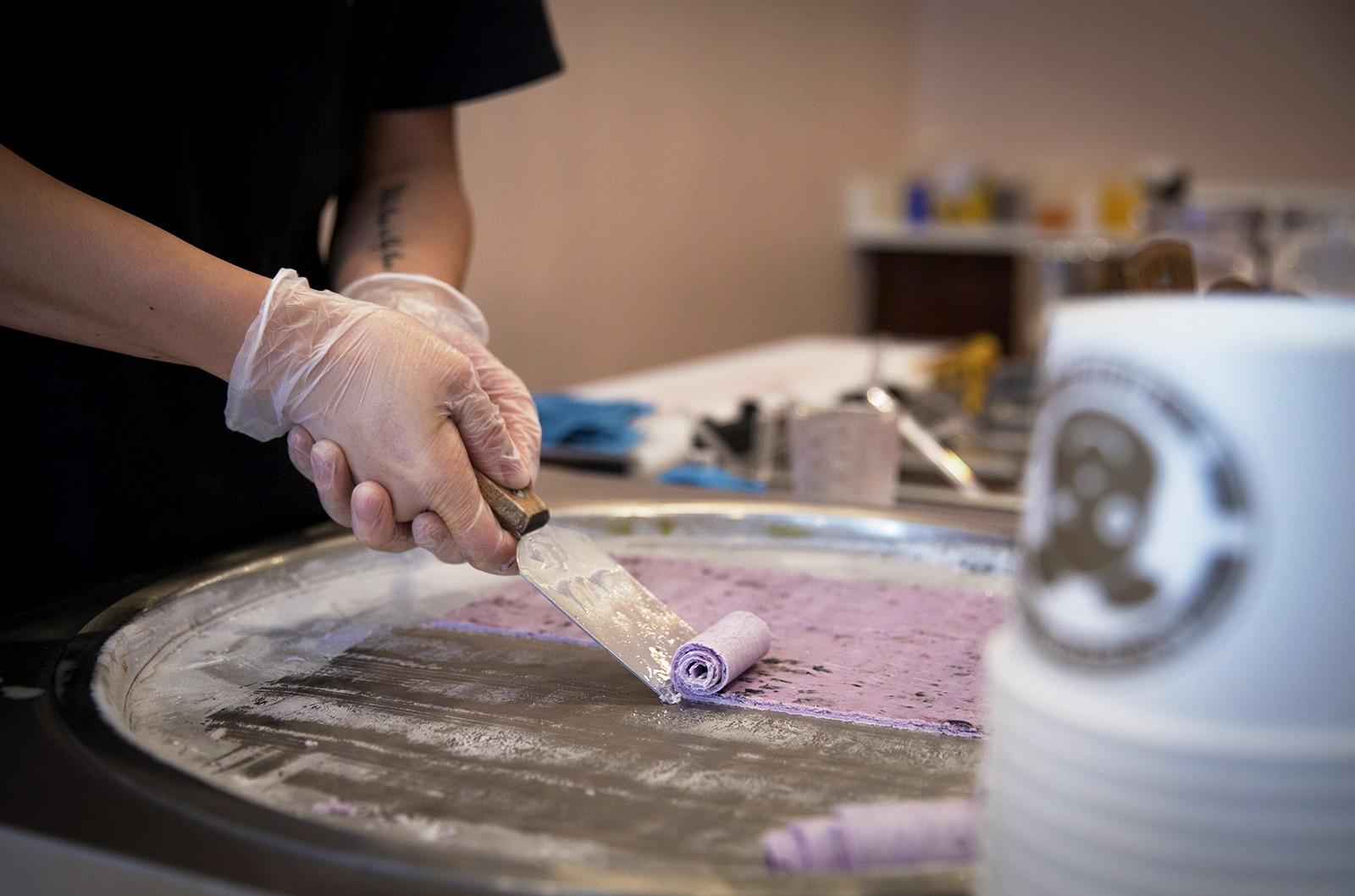When one thinks of sports at Boston University, the first word that comes to mind is hockey. After that, you see basketball, soccer, and all the other varsity sports. Digging deeper into BU’s sports culture brings up a few teams most do not know about, however; teams students can actually join without being recruited. One such group, flying under the radar in the Terrier sports scene, is BU’s own fencing club.
From Monday to Thursday, BU’s dedicated fencers can be found practicing in the multi-purpose rooms of the Fitness and Recreation Center. Between 25 and 30 students take the time out of their schedule to improve on their technique and make some friends along the way. With a 19-12 record on the year, the top fencer is sophomore Katherine Gillman, a Shrewsbury, MA native who has been involved in the sport since the 8th grade.
Katherine agreed to give The Daily Free Press a tour around the team’s practice and equipment areas. Within minutes, one misconception of the sport was cleared up: fencing matches don’t just involve picking up a sword and stabbing at your opponent. There are three specific weapons one can choose &- the foil, épée, and sabre &- and each has its own strategy and rule set.
First up on show was the foil, a beginner’s best friend and, although she has been fencing for quite some time, Katherine’s weapon of choice. The lightest and most flexible of the three, the foil still packs a punch. Ample body protection ensures a safe exit for any beginning fencer, however, no matter how exposed they leave themselves.
“People do get bruises, but there usually isn’t any bloodshed,” Katherine said with a laugh. “You’re well protected so there are no real injuries.”
Hits by the foil are calculated by fencing’s scoring system, a perfect example of technology at work. The tip of the blade is electrically connected to a scoring box that is also attached to an opponent’s lamé, a sleeveless vest that shows the designated hitting zone. Only touches from the tip of the sword count.
The foil’s heavier cousin is the épée. Unlike its smaller counterpart, it has no designated limits on where to hit. Any body part is open game.
Finally, we have the sabre, also known as the “cutting’ weapon. This modern version of its Turkish namesake offers an alternative strategy for those who wish to avoid the thrusting of the foil and épée. Any part of the sabre can be used to score on an opponent, so hits with the side are allowed.
As the “A” fencer of the team, Katherine faces off against other schools’ top members. She has done remarkably well in her second year, winning a majority of her matches even though fencing at BU is only a club sport.
In some meets we don’t do as well because we face off against varsity schools,” she said. “It’s difficult because they have more coaching and more practice time available.
Gillman was quick to point out that a lack of varsity training has not impeded her in any way. The club’s coaches are John Stivers and David Guardino, two recent graduates of Boston University’s fencing club. Stivers and Guardino lead off every practice with a half hour warm-up, followed by light jogging. The students then go off and practice one-on-one battles; the first to five touches wins.
The simulation is meant to prepare everyone for the real thing. Most fencing matches are also first to five touches, while certain higher-competition bouts go as far up as 15. In tournaments where each competitor may have more than eight opponents, wouldn’t fencers get tired quickly?
There’s a time limit of three minutes for the shorter matches and nine for the longer ones,” Katherine said. “But mine never go that late.
BU itself has participated in five such tournaments this year, with an important one coming up at Swarthmore College in Pennsylvania. In a large meet in the fall at Tufts University, Katherine finished 16th out of more than sixty club and varsity combatants.
A newcomer to the team should expect a full-day commitment for the meets, as most this year have lasted over ten hours. While that may scare some away, Gillman insisted the time spent has only strengthened the team. Curious students looking to join clubs at next year’s Splash would do well to give their inner musketeer a chance.
We have a great group this year and encourage people to come try it even if you don’t continue,” Gillman said. “It’s fun and how often do you get to fight with swords? We have all of our own equipment so you don’t need to buy anything to be part of the club.






















































































































